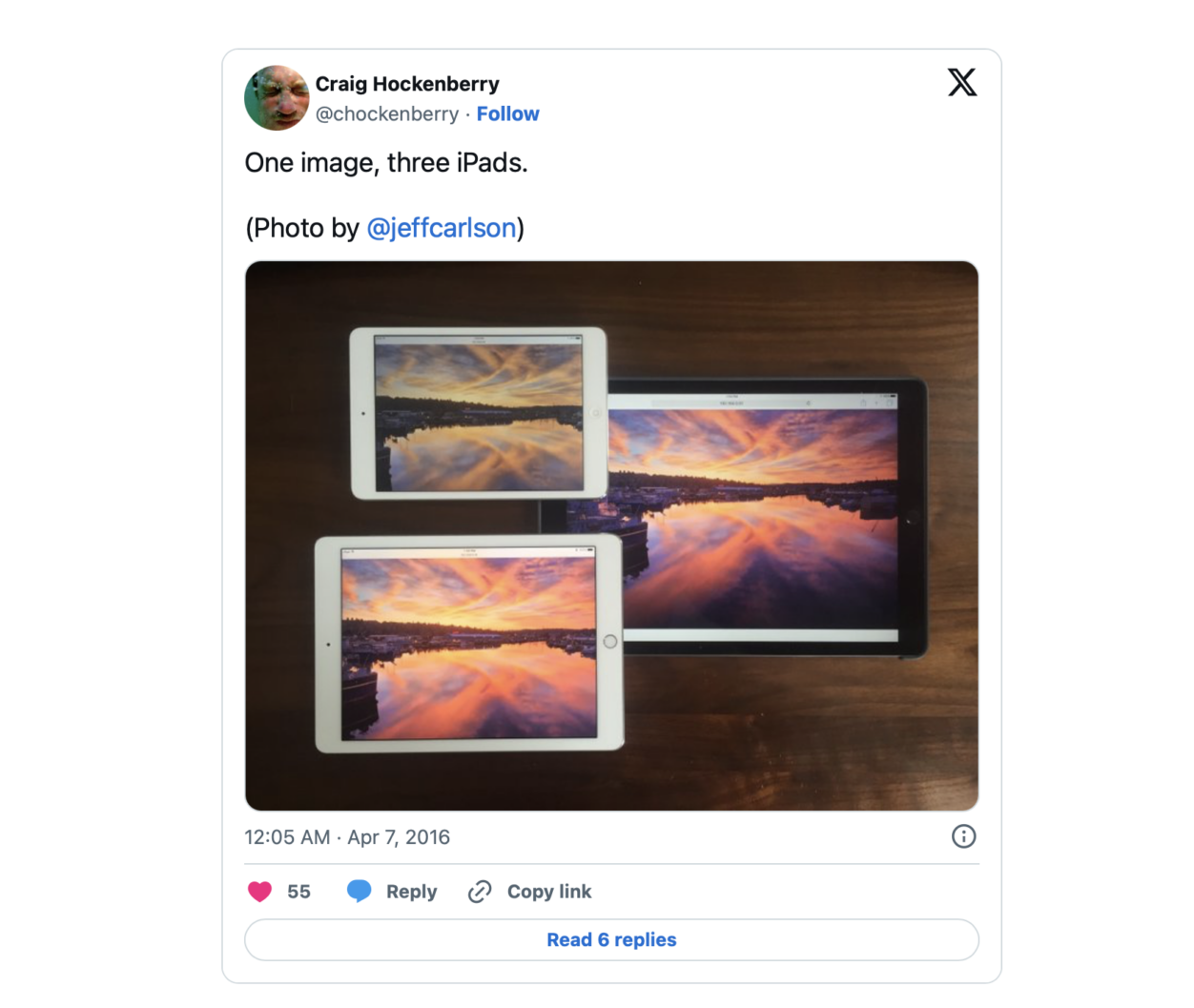„Looking at the future“

ColorSync, Apples Farbmanagement, das seit Jahrzehnten im Mac steckt, zog mit iOS 9.3 auf die iPhones und iPads. Displays ohne Farbmanagement, so wie das iPad mini 2 (oben links im Tweet-Bild) fallen in einer direkten Gegenüberstellung deutlich aus der Reihe.
Today, we’re in a pleasant situation where displays don’t need to get any denser. Thanks to the Retina display and others like it, we can’t see the pixels that are on our screen.
There’s only one way for manufacturers to improve displays and gain a competitive advantage. They need to make the displays “deeper”; able to show a wider range of color. It’s also clear from Apple’s work that they see smarter displays, with things like True Tone technology, as a way to distinguish themselves in a crowded market.
Hockenberrys ganzer Artikel, der zufällig zeitgleich mit Brandon Chesters Blick auf das neue 9,7”-iPad-Pro-Display erschien („Understanding the 9.7″ iPad Pro’s Display: How DCI-P3 & True Tone Work“), ist eine erstklassige Lektüre fürs bevorstehende Wochenende.
Noch ein Auszug:
After using this iPad for a couple of weeks, I’ve realized it’s like the advances of Retina in an important way: I never want to use a lesser display again. And as with higher density, I think it’s obvious that Apple will eventually update all its products to use this improved screen technology. I can’t wait!
It also wouldn’t surprise me to see these wider color gamuts coming to the cameras in our devices. All iOS devices currently create images in the sRGB gamut, while professional gear can produce images in ProPhoto or AdobeRGB. High dynamic range (HDR) photos need a wider range of color, too.